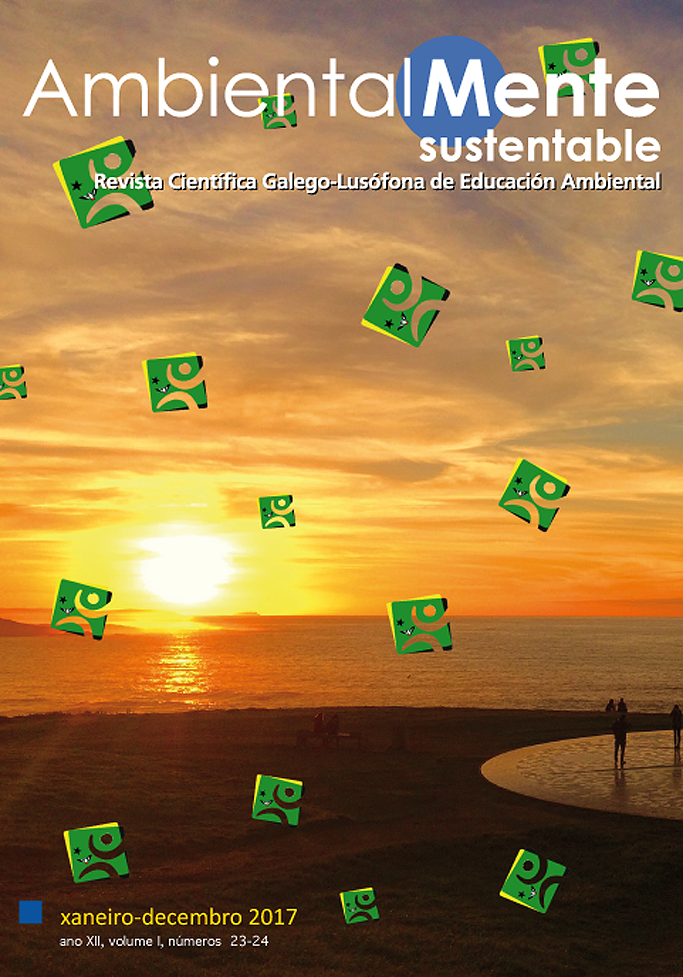AQUAPONIA, a novelty in environmental education
Main Article Content
Abstract
Aquaponics is an activity that combines aquaculture and hydroponics. Usually, it consists on a closed-circuit combination of fish farming and plant growth, both of which are destined for human consumption. Fish excrete ammonia, which, after transformation by nitrifying bacteria, is used as nutrients by plants. This way, water becomes clean again and available for sh. This closed circuit allows to increase food production in a sustainable way, to save water and to avoid soil and water pollution. Aquaponics is a transversal concept, ranging from the local subsistence agriculture context to a global level, marked by overpopulation and the depletion of resources. For this reason, aquaponics is being approached in an emerging way by environmental education programs all over the world. EPAMAC is a professional school in Portugal, which is present in several projects associated with the subject, and has been proven to be an ambassador of the concept of aquaponics in the Portuguese educational system.
Keywords:
Downloads
Article Details
References
Bernstein, S. (2011): Aquaponic Gardening: A Step-By-Step Guide to Raising Vegetables and Fish Together. Gabriola Island, New Society Publishers.
Bocek, A. (2009): Introduction to Fish Culture in Rice Paddies. International Center for Aquaculture and Aquatic Environments, Auburn University.
Crossley, P. L. (2004): “Sub-irrigation it wetland agriculture” em Agriculture and Human Values, (21), 2-3, 191-205.
ERASMUS+ Project Ref. 2016-1-NL01-KA202-023006. ANNIE- Aquaponics, a New Novelty in Education. Consultado a 8 de Setembro de 2017, às 18h30m, em: http://ec.europa.eu/programmes/erasmus-plus/projects/eplus-project-details-page/?nodeRef=workspace://SpacesStore/92df315e-af85-4214-9ee1-6a5a98714fbf
Lewis, W.M. Yopp, J.H. et al. (1978): “Use of hydroponics to maintain quality of recirculated water in a fish culture system” em Trans. Am. Fish. Soc., 107 (1), 92-99.
Love, D.C.; Fry, J.P.; Ximin, L.; Hill, E.S.; Genello, L.; Semmens, K. & Thompson, R.E. (2015): “Commercial aquaponics production and profitability: Findings from an international survey” em Aquaculture, 435, 67-74.
McLarney, W. (2013): The Freshwater Aquaculture Book: A Handbook for Small Scale Fish Culture in North America. Brattleboro, Echo Point Books & Media.
McMurtry, M.R., et al. (1990): “Sand culture of vegetables using recirculating aquacultural effluents” em Applied Agricultural Research, (5) 4, 280-284.
Naegel, L. (1977): “Combined production of fish and plants in recirculating water” em Aquaculture, 10, 17-24.
Rakocy, J. (2012): Aquaponics-Integrating Fish and Plant Culture. Oxford, Wiley-Blackwell.
Rakocy, J.E.; Bailey, D.S.; Shultz, K.A. e Cole, W.M. (1997): “Evaluation of a commercial scale aquaponic unit for the production of tilapia and lettuce” em . Tilapia Aquaculture: Proceedings of the Fourth International Symposium on Tilapia in Aquaculture, 1, 357-372.
Rakocy, J.E.; Masser, M.P. e T. M. Losordo (2006): “Recirculating Aquaculture Tank Production Systems: Aquaponics — Integrating Fish and Plant Culture”, em SRAC Publication, 454, 1-16.
Sneed, K.; Allen, K. et al. (1975): “Fish farming and hydroponics” em Aquaculture Fish farmer, (1) 2, 18-20.



